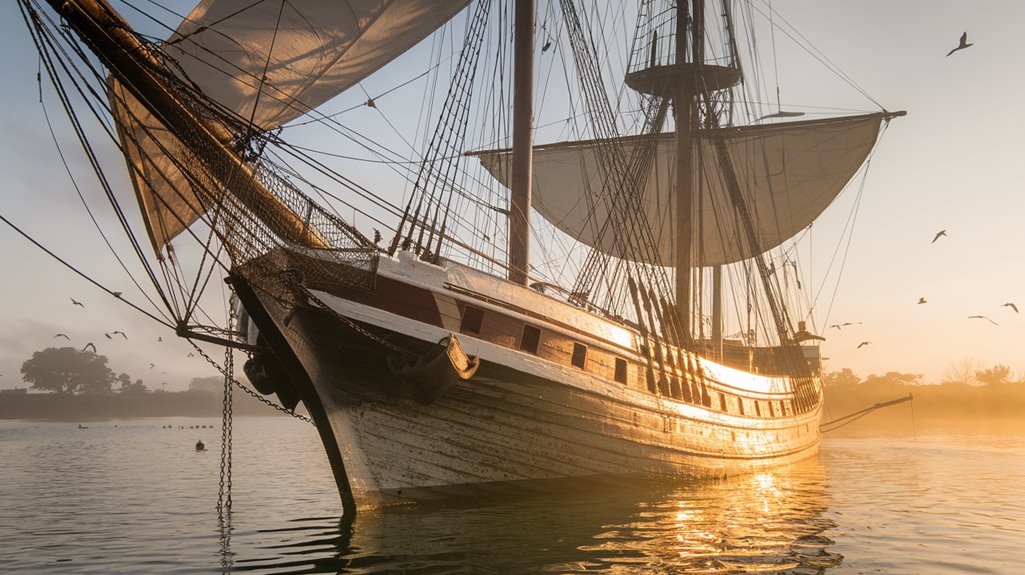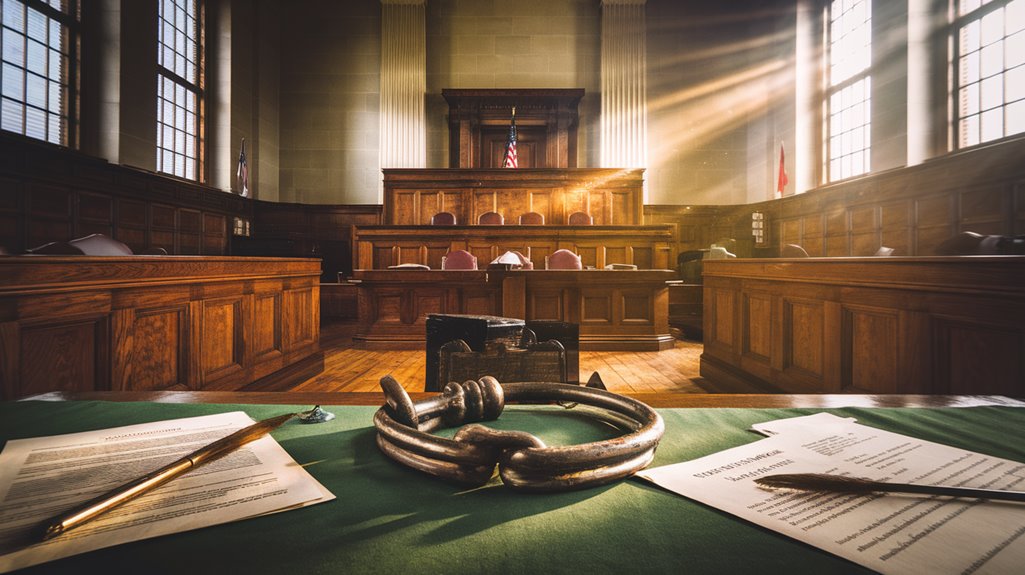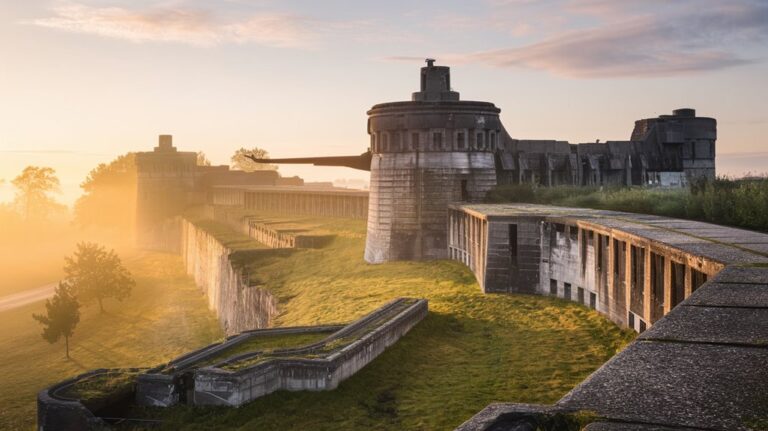Amistad’s Fight for Freedom: The Slave Revolt That Shook America
Like a thunderbolt across calm waters, the Amistad revolt sent shockwaves through America's conscience in 1839. You'll find that this remarkable story isn't just about a group of captives who seized their freedom—it's about how their courage ignited a legal battle that would test the very foundations of human rights in a divided nation. As you follow Cinqué's journey from chains to courtroom, you'll discover how a single act of defiance became a powerful catalyst for change.
The Brutal Journey: From Sierra Leone to Cuban Waters
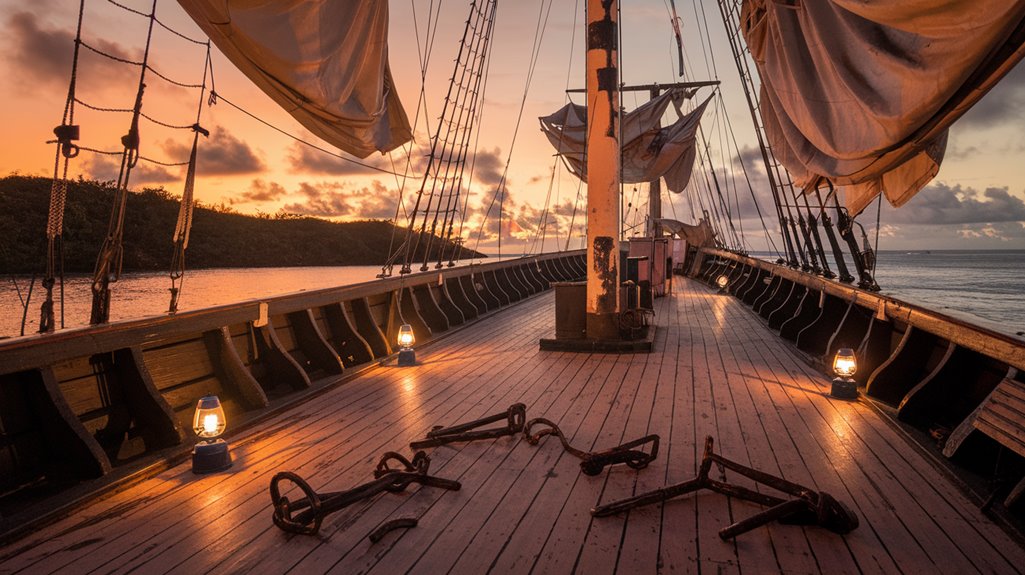
While the British had outlawed the slave trade by 1839, Portuguese slave hunters brazenly defied international law by capturing 53 Africans in Sierra Leone.
You'll find that these captives endured unimaginable horrors as they were forcibly loaded onto the Portuguese slave ship Tecora, bound for Havana, Cuba.
In Cuba, Spanish traders José Ruiz and Pedro Montes purchased the Africans, with Ruiz acquiring 49 adults and Montes taking four children.
The captivity conditions aboard the Amistad were brutal – you'd have witnessed slaves crammed below deck, suffering from inadequate food and water rations while enduring violent discipline from the crew.
As the ship sailed northeast along Cuba's coast, the Spanish captors used whatever tools they'd to inflict pain on their prisoners, setting the stage for an unprecedented revolt.
The ship departed Havana on June 28, marking the beginning of what would become a historic journey toward freedom.
The uprising would ultimately lead to a landmark Supreme Court case where Justice Story's ruling declared the Africans should be deemed free.
A Defiant Stand: Cinqué's Leadership and the Mutiny
The brutal conditions aboard the Amistad sparked a historic rebellion led by an extraordinary figure – Sengbe Pieh, known to Americans as Joseph Cinqué. His leadership qualities emerged when he discovered the terrifying fate that awaited the captives at their destination.
Taking swift action, Cinqué's strategies proved both resourceful and effective: he used a loose nail to free himself and his fellow captives, then armed them with sugarcane knives from the cargo hold. Originally a rice farmer in Africa, Cinqué demonstrated remarkable courage and determination in organizing the revolt. After successfully taking control, fifty-three Africans participated in the uprising that led to the death of the ship's captain and crew.
You'll find that Cinqué's command didn't end with the successful mutiny. He directed the ship's course during daylight hours, though the Spanish crew secretly steered them toward America at night.
Even after capture by the U.S. revenue cutter Washington, his leadership continued throughout the legal proceedings, where he served as the group's key representative in their fight for freedom.
Chains of Justice: The Legal Battle Begins
Following their capture by the U.S. revenue cutter Washington, a complex legal battle erupted that would test America's commitment to human rights and justice.
The case quickly became a landmark challenge that would set legal precedents for years to come.
The initial District Court proceedings saw abolitionist strategies focus on proving the Africans weren't Spanish property but free individuals illegally kidnapped from Africa.
Lewis Tappan and the Amistad Committee launched a public fundraising campaign to support the defense of the captives.
Despite Spanish demands for the captives' return and Lt. Gedney's salvage claims, the court ruled in favor of the Africans' freedom.
When the Circuit Court upheld this decision, President Van Buren, concerned about Southern voters and Spanish relations, pushed for an appeal to the Supreme Court.
The government's efforts to overturn the ruling failed, as the highest court affirmed the Africans' right to return home.
The case drew international attention when British diplomats intervened, citing treaty obligations and pressuring the U.S. to release the Africans.
John Quincy Adams and the Supreme Court Victory
At age 73, former President John Quincy Adams stepped forward to champion the Amistad captives' freedom before the Supreme Court. His passionate advocacy in January 1841 centered on a powerful argument: the Africans had rightfully defended their liberty against illegal oppressors.
The Court's ruling delivered a stunning victory. In a 7-1 decision, Justice Story declared that the Africans weren't property but free individuals who'd been unlawfully kidnapped.
You'll appreciate the significance of this verdict – it struck a powerful blow against the slave trade and affirmed basic human dignity.
Thanks to private fundraising by abolitionists, 35 survivors returned to Sierra Leone in 1842. While the case didn't end slavery, it energized the abolitionist movement and set crucial legal precedents that would help shape America's journey toward ending human bondage.
Legacy of the Amistad: Shaping America's Moral Compass
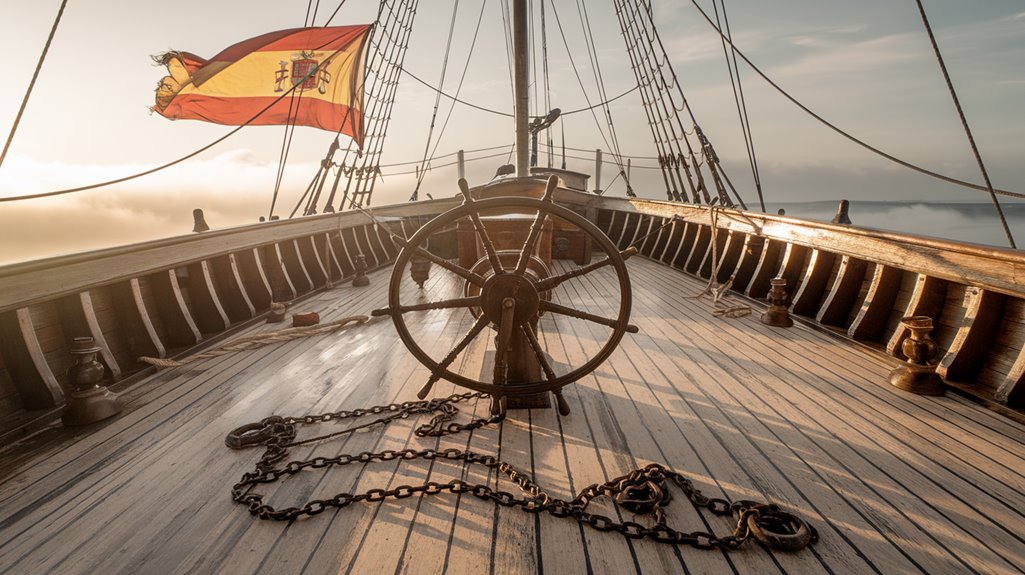
Long after its dramatic court victory, Amistad's legacy profoundly shaped America's moral evolution and strengthened the nation's commitment to human rights.
The case's moral implications reached far beyond the courtroom, unifying divided abolitionists and challenging Americans to confront slavery's brutal reality. Through former president John Quincy Adams' brilliant defense, the case gained unprecedented national attention and sympathy for the abolitionist cause.
You'll find its cultural resonance echoing through generations, from literature to film, as it continues to inspire discussions about justice and freedom.
- You can't help but feel the raw courage of the captives who dared to fight for their basic human dignity
- You're moved by the power of justice prevailing against overwhelming odds
- You're reminded that ordinary people can challenge systemic oppression and win
- You witness how a single act of resistance can spark widespread moral awakening
- You see how the human spirit's yearning for freedom can transform a nation's conscience

